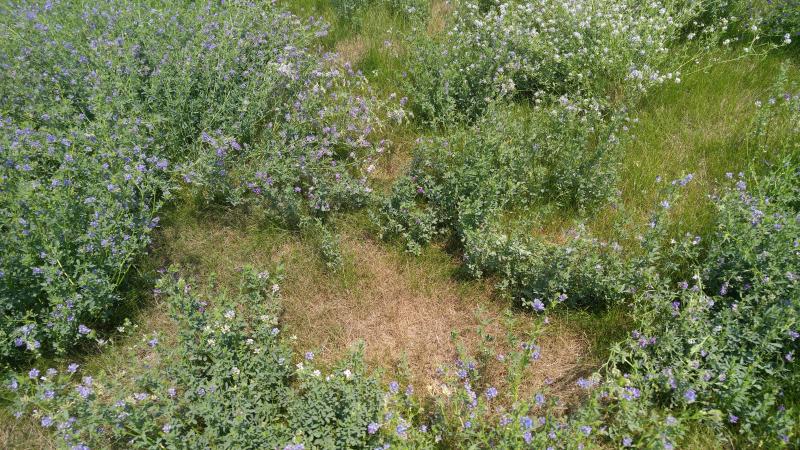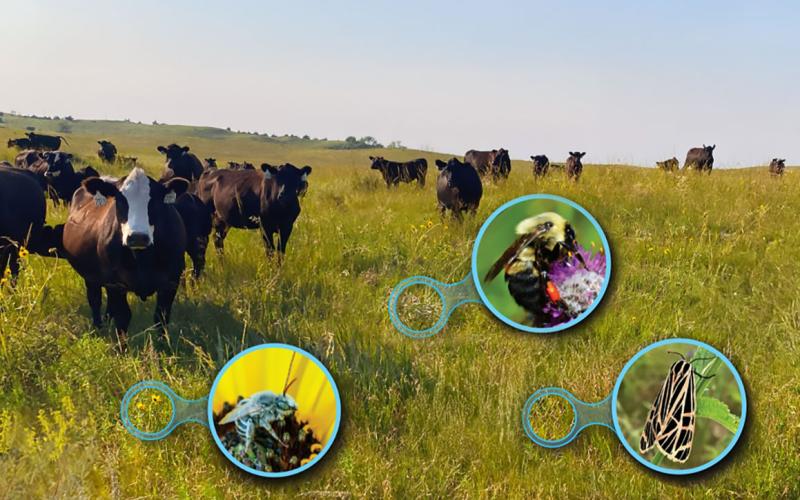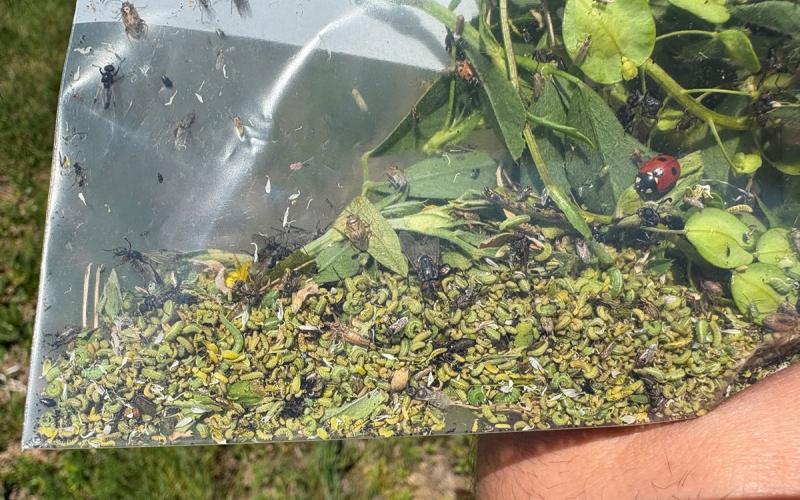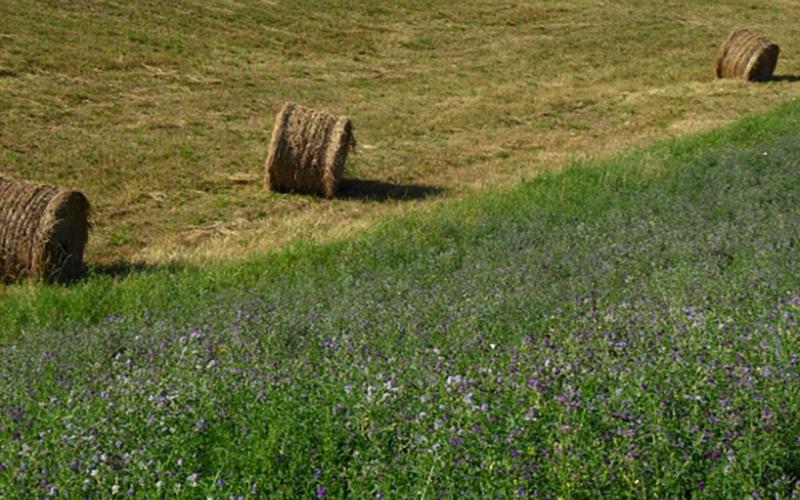
For 2019, grasshopper populations have been quite variable across the state. That is, we have either received reports of very high grasshopper numbers or of very low or nearly absent populations. Most of the reports of high grasshopper populations have originated from areas near rivers and other waterways. This suggests that the rich foliage along the banks of waterways has provided excellent habitat for grasshoppers and has boosted their populations in those areas. For producers with pastures or alfalfa fields near such hotspot locations, it is important to monitor grasshopper populations. Management may be necessary to avoid significant forage loss as grasshoppers move in search of additional food (Figure 1).
Scouting and Management Options

The threshold for grasshopper populations that was established by the United States Department of Agriculture (USDA) is 15-20 nymphs or 8-10 adults per square yard. The two methods for determining if populations are at or above threshold are to use visual counts or a sweep net. For visual counts, estimate a square yard in front of you and count the number of grasshoppers jumping out of the area as you slowly walk towards it. For sweep netting, use a 15-inch diameter sweep net and capture grasshoppers in four pendulum swings (approximately one square yard of area) and count them. With either sampling method, we recommend repeating it several times in a pattern, such as the example in Figure 2, and calculating the average for increased accuracy.
If thresholds are exceeded, an insecticide that is labeled for grasshopper management may be considered. A current list of insecticide sprays for use in alfalfa can be found in the 2019 South Dakota Pest Management Guide: Alfalfa & Oilseeds. Alternatively, spreading poison grasshopper baits or baits containing Nosema locusta spores may be used to reduce populations. If treating earlier in the season while grasshoppers are still growing, an insect growth regulator (IGR) containing diflubenzuron may be applied to inhibit grasshopper development. However, please note that IGRs have no effect on adult grasshoppers and should only be used to manage developing nymphs.


